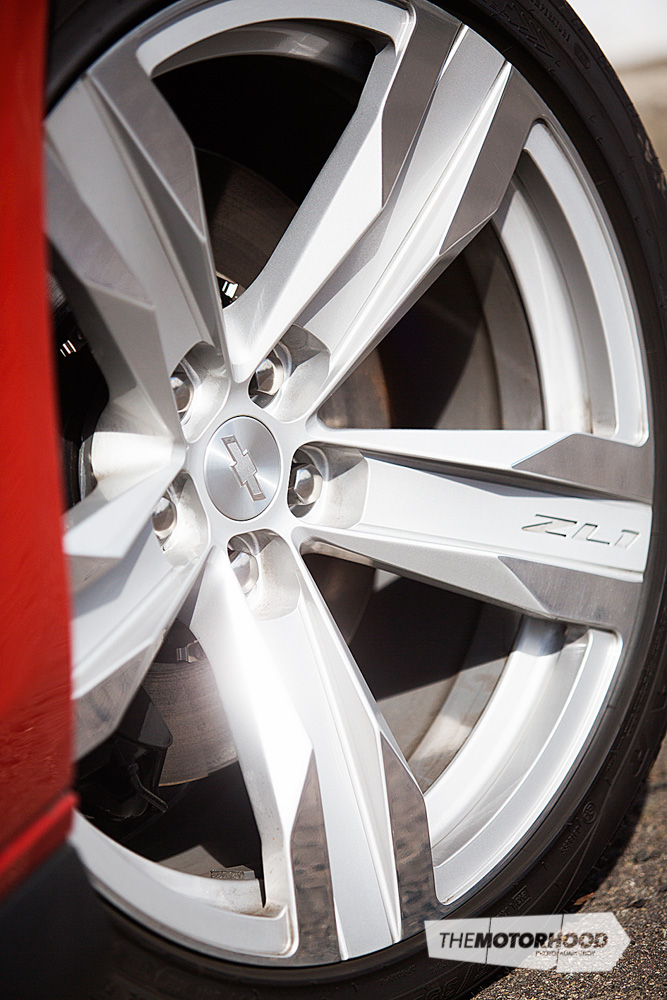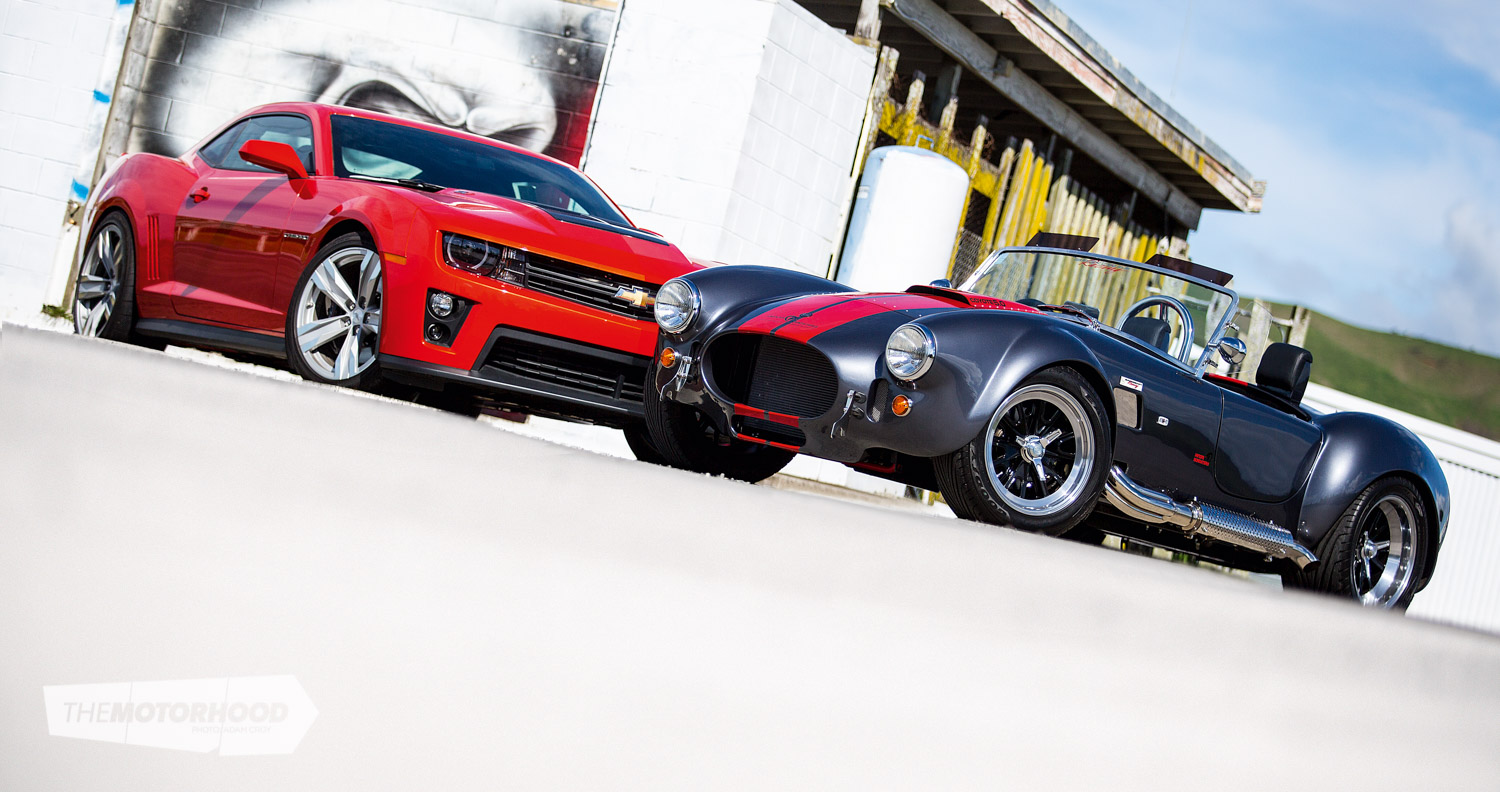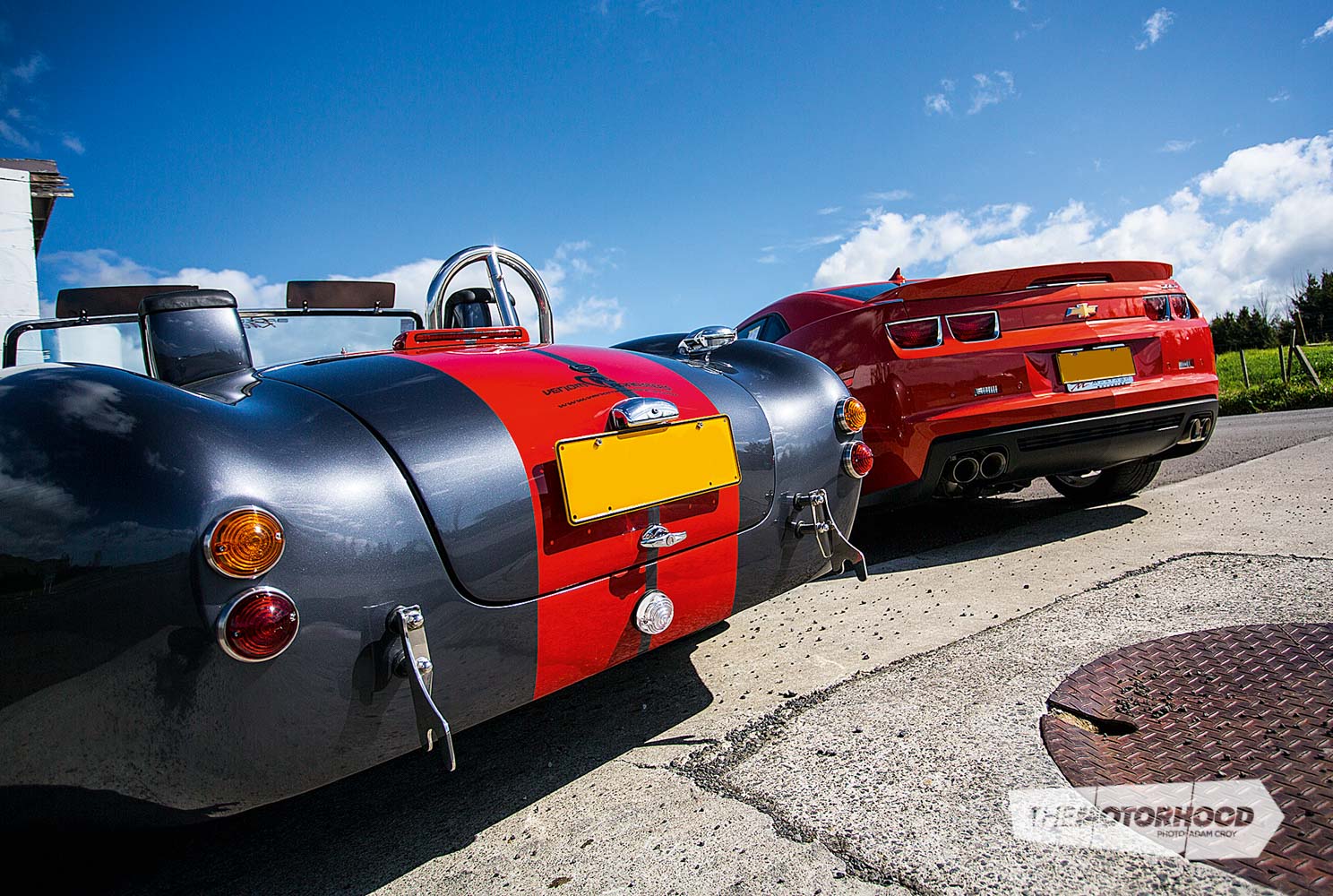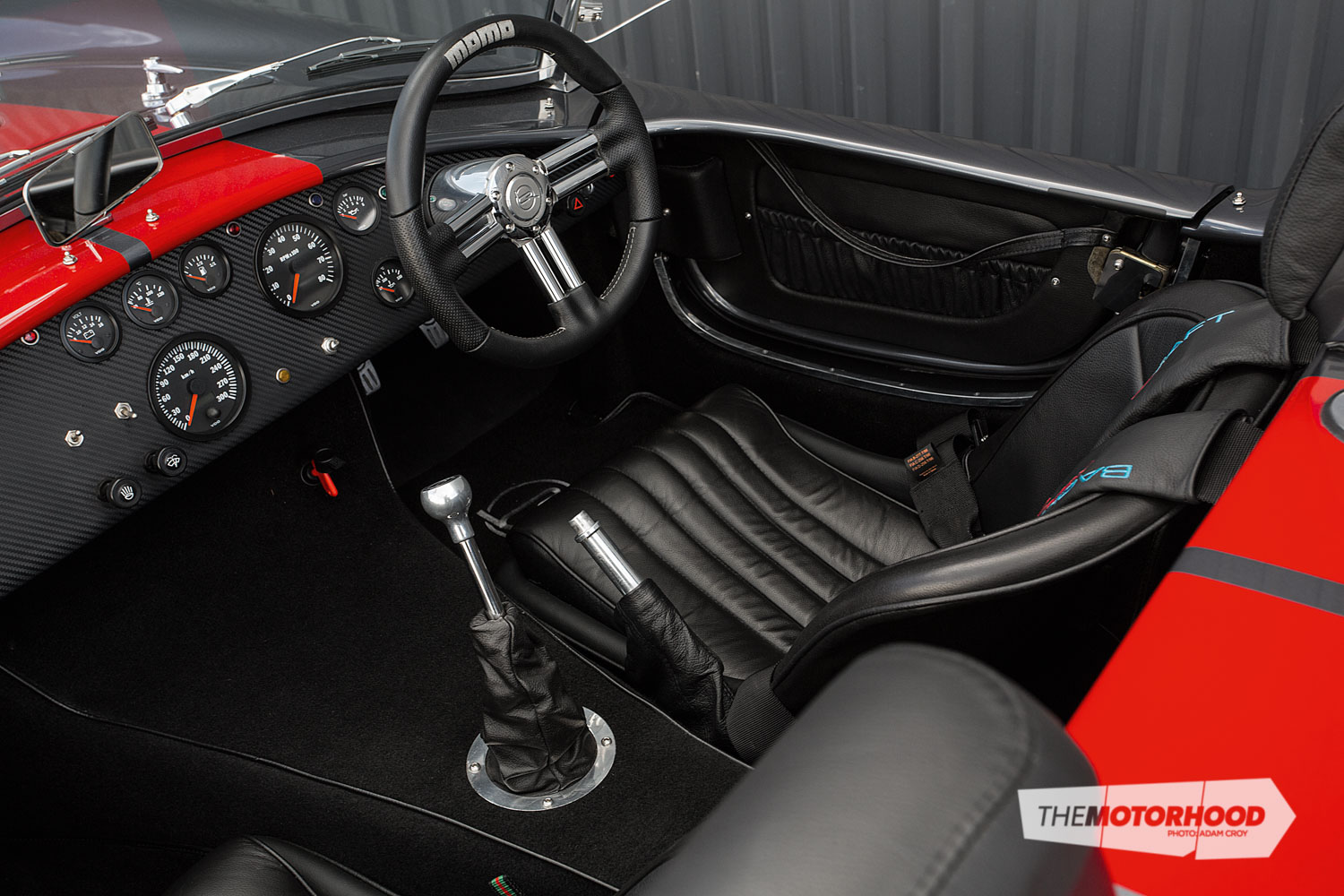data-animation-override>
“We put a 2013 Camaro ZL1 up against the newest version of an old favourite: a back-to-basics Cobra replica”

At first glance, you’d be right in thinking that these two cars couldn’t be more different, and in a way you’d be correct. One is full of the latest technology available, with driver aids, safety features, and an engine combination that most of us wouldn’t have even dreamed of just a few years ago. The other, a back-to-basics machine that has as few aids as possible, and relies simply on the fact that it has a big engine in a lightweight chassis to impress.
Of course, despite these differences, there are also a host of similarities. The big one being that both the 2013 ZL1 Camaro and the 2013 Backdraft Racing RT3 are the latest and greatest versions of old-time favourites. Both the Camaro and the Cobra have a long history as iconic vehicles that have pulled at heartstrings around the globe, and competed fiercely on racetracks too.

While the Camaro has changed hugely from when its first generation was launched back in 1967, the Backdraft Racing RT3, like all of the other Cobra replicas, has remained true to its roots — or more correctly, replicas of the original’s roots.
These days both cars will set you back somewhere between $115K and $130K. The Backdraft RT3 you see here, from Venom Roadsters, being at the higher end of that scale (although prices for the Backdraft cars start at $100K), and the ZL1, supplied for our shoot by US World Direct, coming in at closer to the lower end. With a similar price bracket and target market, we took the chance to compare them head-to-head to see which way we’d throw our money.
The Camaro

Essentially, the most similar car on the road to the ZL1 Camaro is the HSV GTS. Based on General Motors’ Zeta platform and filled with all sorts of mechanical and computer wizardry, the cars are simply amazing. The supercharged LSA engine produces 580hp and plenty of torque, which means the traction control works hard pretty much all of the time …

The test vehicle was fitted with the optional 6L90 automatic transmission complete with paddle shift, which, as you’d expect, worked flawlessly. Unsurprisingly, with how quickly the car accelerates, your fingers are kept busy trying to shift before the engine hits the rev limiter.
While we didn’t get as much time in the car as we’d have ideally liked, it certainly lives up to what we’d expect from the ZL1 badge. Mountains of torque and as much grip as shit stuck to a blanket, all in a well-refined package that anyone could jump in and drive. Driving it casually, you’d never know that it’s capable of 0–100kph in just under four seconds; it’s that refined.
The ZL1 isn’t all about straight-line speed though, as it shares the magnetic ride control suspension of the top-of-the-line HSVs, making it a real weapon in the twisty bits too. With so much power and handling potential, it’s great that the brakes are equally as impressive, and that the cabin is cocooned with more airbags than you’d hope to ever need.
It’s a fun car to drive, and equally as great to be a passenger in. The interior is well appointed, and despite the amount of power it produces, it’s as quiet as anything else on the road.
The Cobra

I’ll admit it, before I had even jumped into the car, I’d already made the decision in my mind that there was just no way the two cars could compare; the Camaro was going to destroy the Cobra in every aspect. Oh, how wrong I was. Sure, the Cobra doesn’t have the electronic driver enhancements, supercharger, roof, audio, or any creature comforts, but what it lacks in accessories, it more than makes up for in fun factor.

At 440hp, as opposed to the ZL1’s 580hp, the power difference is significant — on paper at least. However, with the Cobra weighing nearly 800kg less than the Camaro, the performance difference is not.
When I first put my foot on the clutch to throw it into gear, I thought the car was going to be a bitch to get moving. However, despite being heavy, it was remarkably driveable, and once on the road, its weight was all but forgotten.
The variable valve timing of the 5.0-litre Coyote motor is a great feature; it really makes the car come alive further up in the rev range. Add to this the intake noise it creates, and the result is a car that makes you want to keep on feeding it more and more throttle — and it gives you a smile that’s wider than your face. Make no mistake, it’s a seriously fast car, and the power difference on paper isn’t detectable on the road in the slightest.

With side-exiting exhaust pipes not far behind your head, it sounds awesome, although I imagine after a long trip you’d get out of the Camaro feeling a whole lot fresher. But that’s not what the Cobra’s about. It’s a true driver’s car: built to drive, push hard, and enjoy; not to fill up with kids and luggage, and do the shopping in. The reality is, it’s a selfish car, all about you, the driver, as opposed to the Camaro, which is the same, but gives you the option of lying to your spouse about it being a great family purchase …
The verdict

In reality, both cars are amazing and I’d happily own either — however, they’re also very different. The Camaro can be driven with as much ease as any family sedan. It’s easy to get in and out of, and you can almost blend in with traffic and go unnoticed. The Cobra, on the other hand, is a great weekend car, but you know you’re driving it, and everyone around you knows it too. It’s loud, it’s low, and it needs driver input and full concentration to keep it on the road. You come out of it knowing that you’ve driven it, such is its basicness, yet your face wears the effect of it’s overall package, in the form of an all-encompassing smile that others just won’t understand until they’ve driven one.
I’ve always thought of Cobras as being the stereotypical ‘old man’s’ car, with no real purpose, but I take it all back, as the Backdraft RT3 is one of the most fun cars I’ve ever driven. It may not offer as much bang-for-your-buck as the ZL1 does in terms of the gizmos and gadgets, but in terms of driver appeal, it’s right up there.

The ZL1, on the other hand, has all the trickery and fruit that you could ever ask for — and a whole lot more that you never knew you wanted, but once you get used to, you will struggle to live without. It’s not too dissimilar from driving a late-model HSV or similar (we’re yet to drive the supercharged HSV GTS, which we can only imagine will be a very similar package): gobs of power, amazing handling, and the ability to drive it every day without fuss, if you so choose. In short, each vehicle has its own strong points, and picking one out of the two would completely come down to the owner’s requirements … But no matter which side you’re backing, you’re onto a winner. Thanks to Venom Roadsters and US World Direct for letting us experience both cars.
2013 Chev Camaro ZL1
- Engine: Chev 6.2-litre LSA, roots supercharger
- Driveline: 6L90 six-speed automatic transmission, paddle shift, unequal-length axles
- Suspension: Magnetic Ride Control coilovers all round
- Brakes: 14.6-inch front rotors, six-pot Brembo calipers, four-pot rear calipers
- Wheels/tyres: 20×10- and 20×11-inch forged-aluminium rims, Goodyear Eagle F1 SuperCar G:2 tyres
- Exterior: Carbon-fibre bonnet insert, ZL1-only bodykit
- Interior: All the gizmos you could ever ask for, and more
- Performance: 580hp, 556 lb·ft
2013 Backdraft Racing RT3
- Engine: Ford Coyote 5.0-litre quad-cam V8, ceramic-coated headers, high-flow intake, side pipes
- Driveline: Tremec TKO500 five-speed, independent rear suspension, 3.91:1 ratio, LSD head
- Suspension: Coilovers all round, independent rear suspension
- Brakes: four-pot front calipers, two-pot rear calipers, vented rotors
- Wheels/tyres: 17×8.5- and 17×10.5-inch knock-on wheels, 235/50/17 (front), 315/35/17 (rear)
- Exterior: Full fibreglass body
- Interior: Full leather trim, carbon-fibre dash
- Performance: 0–100kph in under four seconds, top speed of 260kph
Buy the magazine that this article first appeared in below:





















